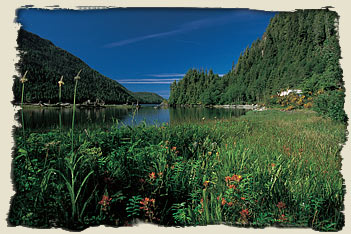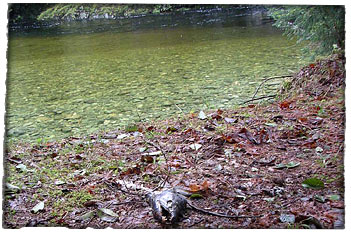|
 |
Bear Mapping
Black bear play an important role in maintaining forest health. They function as both predator and generalist herbivore (they eat meat and plants). Maintaining their numbers and natural denning habitat is key to ensuring the long-term well-being of the Biosphere.
As herbivore, bears contribute to the germination and distribution of many types of berries and other vegetation. These plants in turn are used by roosevelt elk, black-tailed deer, marten, and many other species.
As predator, bears help keep prey populations in-check with the carrying capacities of the land. Bears also carry tons of nitrogen-rich fertilizer annually - in the form of salmon carcasses, crustaceans and sea weeds - from Clayoquot waterways, onto nitrogen-depleted inland environments.
Bear mapping tools include infared motion-triggered cameras, bear hair snares (hair collectors) and good old-fashioned tracking. By utilizing these and other methods of research and investigation, resort staff, guests, and consulting biologists:
- Learn about and track bear families - through DNA study and cataloguing.
- Determine movement corridors and levels of use.
- Locate critical denning sites and potential sites.
- Mitigate impacts of guests and of Outpost expansion on bear population and habitats.
For a chronology of the development of the resorts'
Environmental Legacy Program visit the
Newsletter Archives





